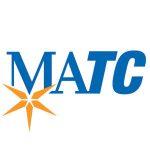Forgotten Milwaukee
By Frizell Bailey
Few would argue that a quality education is critical to a child’s success in life. There is a clear correlation between educational attainment and income level. So it would seem a no-brainer that the surest way to tackle the economic disparity that exists between blacks and whites in Milwaukee would be to offer poor blacks students a quality education. However, black students in Milwaukee all too frequently fail to receive one.
According to a 2004 Milwaukee Public Schools Report, 61 percent of MPS seniors graduated in 2003. Broken down by race, the study found that while 71 percent of white students graduated, only 56 percent of black students did.
Why is there such a huge gap between white and black graduation rates? The easy answer would be to talk about the failures of Milwaukee Public Schools, which are, according to critics, the logical culprit. Educators, the argument goes, simply are not doing their jobs. We need more accountability. We need to rid ourselves of these no-account teachers who simply want a paycheck. Some see a solution in school choice.
At the heart of the issue for proponents of school choice is a free market. Just as in any other industry, the theory goes, public schools have no incentive to innovate if there is no real competition. The thinking has been that parents, given a choice, would remove their children from failing public schools and enroll them in “better” private or charter schools, given the choice. As for public schools, they would either learn to compete or go the way of the dinosaur. Either way, students would receive a better education. This rationale, of course, fails to consider one fundamental element of human nature. People will do anything for money.
Who’s Minding The Store?Perhaps the biggest criticism of choice schools is that there is insufficient accountability. And there is perhaps no more glaring an example of choice school failure than Harambee Community School. Cleveland Lee, the school’s chief financial officer, was found guilty of theft and filing false income tax returns. Lee embezzled almost $750,000 from the school, using the money to buy luxury cars and remodel his home instead of educating students.
Legislative leaders have tightened oversight of choice school finances in the wake of such scandals. But these new rules still do not give the Department of Public Instruction authority to oversee the educational programs of these schools, though in recent weeks DPI has sought to enforce educational standards as outlined by existing minimum school standards law.
Anyone Can Teach?Within the program’s current structure, there are no qualification requirements for either the person starting a school or the teachers hired. You don’t even have to meet any requirements as to the type of building in which classes are held. As long as you can get an occupancy permit from the city, you can open a school just about anywhere, from a basement to a storefront.
Richard Cohn, principal of MPS’ Cooper Elementary, has serious doubts whether schools that don’t require any training in instruction can adequately educate students.
“Teachers have to be certified to teach in the public school,” Cohn says. “I know of instances where teachers went to choice schools because they weren’t certified. What does that tell you?”
The problem with choice schools for Cohn is that they divert funds from public schools. “It just seems to me that with limited resources, it’s unrealistic to try to field a public school system plus [choice schools],” Cohn says. “It would be like trying to create two public electric power companies.” This is not to say, however, that there are no choice schools doing a good job. Visiting 106 of the 115 choice schools in the area this past summer, the Milwaukee Journal Sentinel’s Alan Borsuk and Sarah Carr determined that there were as many good schools in the program as bad ones. They judged bad schools to be those where little to no instruction seemed to be taking place.
Interestingly, they found the principle effect of the choice movement has been to preserve private schools, particularly Lutheran and Catholic schools. In fact, 70 percent of students in the program attend religious schools, just as opponents of school choice feared. In defense of religious schools, however, none have been involved in finance mismanagement scandals and most have processes in place to insure the credentials of their faculty and staff.
Partisan research financed by pro-school choice groups is much easier to find. In 2000, School Choice Wisconsin, a local nonprofit organization, commissioned the conservative Manhattan Institute for Policy Research to conduct a study of choice schools versus public schools in Milwaukee. The study found that 64 percent of students enrolled in choice schools graduated, compared with 36 percent of public school students. The study was widely offered by choice advocates like the Black Alliance for Educational Options (BAEO) as evidence of the benefits of school choice programs.
Though some choice schools do test their students, the program does not require choice them to take the same standardized tests as their public school peers. Choice advocates continue to oppose standardized testing to evaluate the performance of students in choice schools, favoring more long-term studies. But with no mechanism in place to evaluate the performance of choice schools, how do we know they are better than MPS?
In fact, the Department of Public Instruction still has no authority under the program to assess the educational programs of these schools. In cases where choice schools were closed, it was for financial malfeasances. DPI has recently attempted to assess educational programs at choice schools under an existing law written for private and parochial schools. We’ll have to wait and see how that goes. VS















